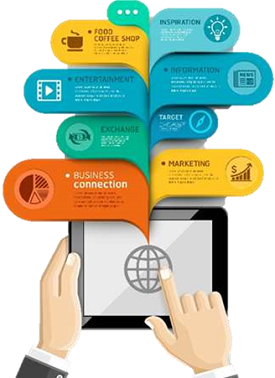
- Mobile Learning Essentials - Home
- Introduction
- Mobile Learning Essentials - Myths
- Enhancing Mobile Learning
- Case Study1
- Reflection and Research
- Cost vs Benefit Ratio
- Communication Mobile Learning
- PersonaliZing M-Learning Platforms
- Expectations of Mobile Learners
- Cultural Factors
- Frameworks
- Role of Context
- Facilitating Mobile Learning
- Case Study2
- Adopting Mobile Learning
Communication through Mobile Learning
Communication is the backbone of education. When it comes to M-learning, communication can take many forms, such as −
- Calling
- SMS
- Video-conferencing
- Chatting, etc.

Depending on the number of people engaged in the conversation, the mode of communication could be one-to-one, one-tomany and many-to-one. There have been many developments in task-related communications using online applications, some of which are scheduling and collaborative project work.
Online collaboration has now overtaken traditional methods of writing as the largest medium of content creation. Communication between a learner and trainer involves a multi-layered information sharing model, complete with deadlines, progress bars, and adequate fields for feedback and provisions for correction and improvement.
This need to share a one-one relationship with the trainer has led to many companies creating tools that enable a student to get that exclusive feeling of tutoring. Using these tools, learners can have an exclusive chatting session with their tutor, get feedback and ask questions, unlike a classroom environment where the students dont ask questions half the time because they are scared lest they be made fun of in the class.
Sharing Resources in Mobile Learning

The introduction of cloud computing has seen a lot of positive changes introduced in online education. What originally only meant data sharing, also became useful as creating data storage libraries for all to share.
This became very useful for teachers, who now do not need to share documents needed for tests individually. All they had to do was upload the files in cloud, so that all the people connected can access it from there. Data is not stored locally any more.
Rather it is being increasingly stored in the cloud. Although, there are some legitimate concerns about sharing sensitive data in cloud, where many people have access to it and you cannot determine which other people they can share the information with.
Presentation
The use of digital media for presentation became a successful venture with the advent of PowerPoint slideshow presentations. This revolutionized presentation themes and left a legacy which continues to this day.
In fact, in todays world, learning materials need not be presented locally any more. They can all be presented for online access. Real-time information can also be shared in webinars.
Presentation no longer has to be a one-way activity as various tools provide the ability for collaborative work or real time feedback from teachers. The material of course can be supplemented with interactive tools permitting polling or live answering of questions.
Content Creation
Earlier, the skills and tools to create sophisticated audio and video content were only the available with trained professionals. However, with the increasing influence of online learning on our lives, people now have devices that can record and share songs, make videos and broadcast them online within moments.

Software Tools that can auto-correct rookie errors in video-shooting and music recording are now available for free usage online. This is not to say that the quality of video or audio files are now industrial standards, but they are gradually improving and in time, will replace professional services.